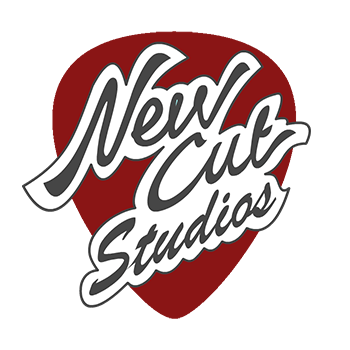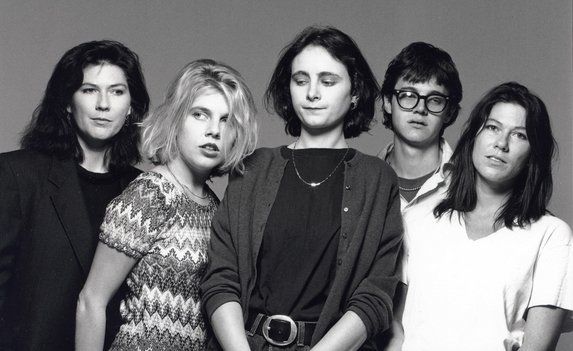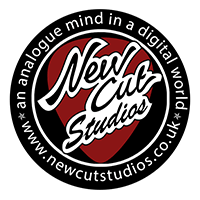Need an injection of Bleach?
Super 8: What’s so great about 8-track?
As the industry standard, 8-track recording was a relatively short lived phenomenon, probably no more than ten years as the industry standard, during the big league studio era. But for such a short lived professional format, it has captured some ground breaking musical works — and some of them long after it was retired by the major studios as a regular working medium. It’s hard to believe that people would still use technology that old in the 21st century, but hey, The White Stripes won a Grammy with it.
“In his octopus’s garden… ”
Multitrack recording, and indeed specifically 8-track recording, came about largely through the vision of one man — one guitarist actually, who throughout his life was quite an inventive chap. In 1953, or so Les Paul maintained, he had a daydream in which it appeared to him that stacking several record and playback heads of a tape machine on top of each other — and using wider tape — would give you the ability to record multiple isolated instruments, either simultaneously or separately. He’d already kind of invented multi-track recording by modifying a domestic stereo tape deck to allow independent 2-track recording as early as 1949. As with all origin stories there are conflicting narratives, but it would appear that Ampex had also been thinking along similar lines when the erstwhile Lester Polsfuss approached them with his multi-track tape concept. Once alignment and synchronisation issues had been resolved, a tape recorder with eight discrete tracks was finally patented in 1955. By 1957 the very first Ampex 5258 Sel-Sync machines running one-inch tape were in production - and Les Paul was first in line to get one.
The second Sel-Sync 8-track to come off the line went to Tom Dowd at Atlantic Records, where I believe Bobby Darin’s ‘Splish Splash’ was the first hit to be recorded on it (although Dowd has said that the very first session was with Laverne Baker in February 1958). When he became a recording engineer after WWII Dowd was still bound to secrecy regarding his previous job as a physicist. When the Manhattan Project was still actually based in Manhattan he’d been a cyclotron engineer at Pupin Hall and later went on to work at Los Alamos, NM. Drafted into the army with a nominal rank of sergeant at the age of 18 his research contribution to the first atom bomb was far in advance of any theory that Columbia University would teach him in his intended nuclear physics degree, and so secret that it could not be submitted for matriculation. So he abandoned academia and joined the music business instead. He went on to become perhaps the greatest recording engineer of the 1960s and ’70s. He once said that “having worked with such sophisticated electronic equipment and being musically sensitive, recording was child’s play” (Mix magazine, January 1999). I’ve said it before, but you know, sometimes it really is rocket science.
The 5258 tape deck was orthodox enough: almost every professional recorder in the post war years was based on the Magnetophon K1 that BASF & AEG had built back in 1935 for Adolf Hitler*. However the separate signal handling for each channel required some pretty deep equipment racks and you needed pretty deep pockets to afford them as well. At the time the Ampex Sel-Sync cost $10K: that’s over $100K in today’s money. Les Paul called his new machine ‘The Octopus’ when he had it installed in his House Of Sound studio at Mahwah, NJ. The audio engineer who installed it for him was a skilled electronics designer by the name of David Sarser. Sarser was also an able concert violinist, but sadly he would give up this other string to his bow five years later when his Stradivarius was stolen in what turned into a crazy and enduring real-life mystery**.
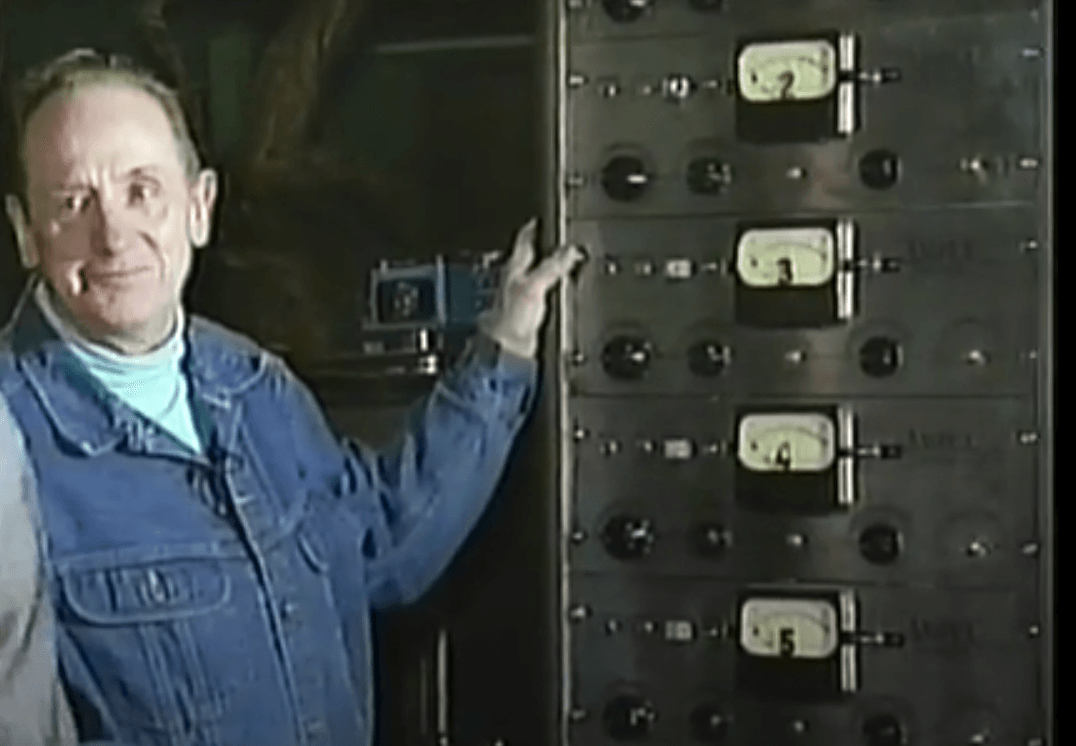
Funky town
It took a decade for the rest of the music biz to catch up with Les Paul and Ampex - by 1968 most of the major studios had moved up to 8-track reel-to-reel machines - by which time there were already some 16-track studios. For a long time 3-track tape machines had been the standard in many top studios and then by the early ’60s, 4-track machines were the acme. Although during those years a young Frank Zappa, ever at the cutting edge of music, was pushing the envelope out at Pal Recording in Rancho Cucamonga, CA, with a 5-track ½” tape recorder custom built by Paul Buff. All the same, technology was accelerating and by the mid 1970s most recording studios had already installed 16-track recorders and 24-track 2” reel-to-reel was the standard to aim for. The first 24-track 2” tape machine was actually built by Jeep Harned of Music Center Incorporated in 1968, at the same time EMI Abbey Road was only just converting to 8-track (more of which in Episode 4). Recording pioneers TTG Studios in Hollywood commissioned the MCI 24-track, having already been the first studio in the world to have a 16-track machine which they had developed themselves***.
Both the TTG 16- and the 24-track recorders were based on Ampex 300 machines. Despite having come on the scene all the way back in 1949 the Ampex Model 300 decks became a favourite tape transport on which to build improved recorders. The 300 deck, like its forerunner the 200A was an American copy of the German Magnetophon, just as EMI’s BTR machine was in the UK. Jeep Harned later recounted that TTG’s chief engineer Tom Hidley called him up at home and asked him if there was anything stopping them from building a 24-track tape recorder. Jeep said why not, and built 24 of the solid state custom tape channels he’d already become known for; and called Lipps, Inc. in Santa Monica, CA, to specify details like the coil inductance and gap lengths required for the new head configuration. The reaction from established tape giants Ampex and 3M was a mad panic but it still took some time to develop their own 24-track recorders. And most studios, outside California anyway, would keep running 16-track for a few years yet. Multi-track magicians Queen didn’t make an album on 24-track until
A Night At The Opera in 1975.
In the narrow window in history when 8-track was the acme of recording technology, there were only a few classic albums recorded with it. However, in later years there were some significant, ground-breaking albums recorded to 8-track analogue tape — albums that were both innovative and genre defining. And some of that innovation is, in part, down to the imagination needed to achieve superb results with limited channels. We still like to use 8-track tape recording here at New Cut Studios, and while we don’t have one of those original “selective synchronous” Ampex machines we do have a recorder with it’s own place in the history books. It was made by Otari and without it the Seattle music scene in the late 1980s might have sounded very different.
Need an injection of Bleach? (Super 8: Episode 1).
In Seattle’s MoPOP museum there is a rather ordinary looking tape machine. Granted, it is a professional 8-track recorder, and not just a domestic reel-to-reel stereo deck — but it doesn’t look like anything special. In fact it would need to go through some serious product development to get this rough diamond into a consumer showroom. It is however the machine on which Nirvana recorded their first album. That’s right,
Bleach was laid down over about 30 hours at a cost of $606.17 on this modest 8-track recorder. It is the Otari MX-5050 ½” tape machine from Jack Endino’s Reciprocal Recording studio in Seattle. Those 30 hours were spread over a period between December ’88 & January ’89 rather than one concerted undertaking, but that still has to be the work of a well rehearsed band and an experienced engineer. That is if you want to get anything decent tracked — never mind the precursor to an album that would knock Michael Jackson off the Billboard No.1 and sell over 30 million copies.
Bleach may have been eclipsed by it’s sequel thirty years ago, but superb songs like ‘School’, ‘Love Buzz’ and ‘About A Girl’ still sound great to this day. I still have my copy on snot-green vinyl and it’s still my favourite Nirvana opus. Don’t get me wrong, I ended up playing
Nevermind a lot when that came out, and I enjoyed it — but at first it sounded like a dilution to my ears, it felt a little tame. There was more than a whiff of a contrived approach; where
Bleach had felt spontaneous, even ingenuous. For me
Nevermind lacked the pure, visceral ignition of their debut record.
Bleach still sounds fresh and immediate to this day, and the way it was made is a big part of the communion it creates with the listener. It was made on a very mundane machine, but you know what? This tape recorder would have been significant even without Nirvana, because this utilitarian crucible was the conduit for a lot of other great music too. That same Otari tape deck, in the hands of Jack Endino recorded the cream of the Seattle crop — almost all the early recordings by Soundgarden, Mudhoney, TAD, Screaming Trees and Green River were made on this 8-track tape deck at Reciprocal Recording.
We like to record to ½” 8-track analogue tape here at New Cut Studios as well - and our recorder of choice for tracking is the exact same model tape machine: the Otari MX-5050 8SHD. Here’s a picture of it below, in the New Cut control room; great songs like ‘Negative Creep’, ‘Mr. Moustache’ and ‘Blew’ were all put down on a tape recorder identical to ours. Looking at the serial number stamped into the plaque on the back, our machine was made in 1977. At that time the Otari company were relatively new to the field of magnetic tape recording; the people behind it however certainly were not.
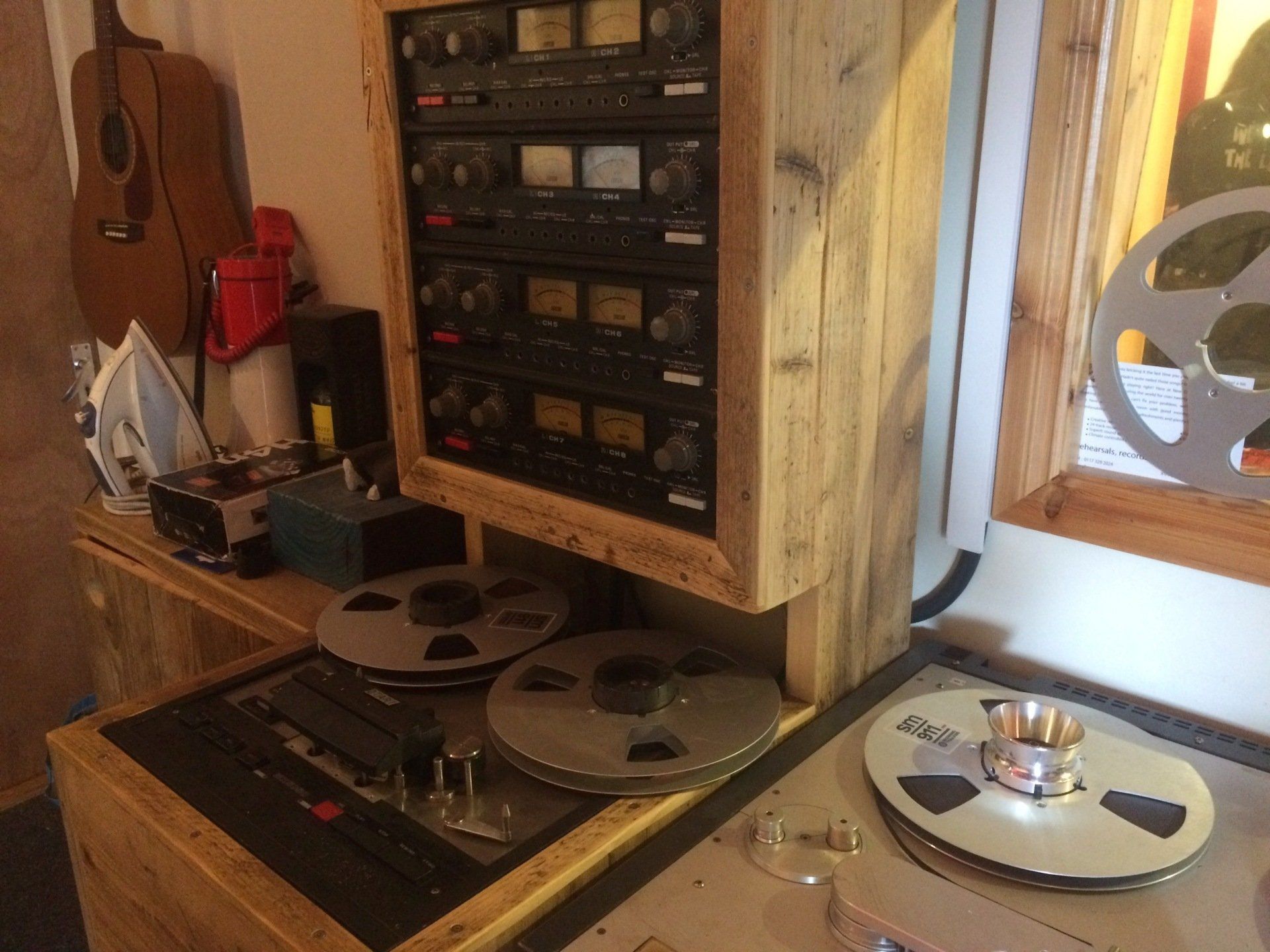
Masayuki Hosoda had founded the Otari Electric Co. Ltd. in Japan in 1964, after spending ten years as an engineer working for TEAC. By 1974 he was setting up a subsidiary Otari Corporation in San Carlos, CA, with Mitsuo Takekawa a one time director of Shibaden, Hitachi Group’s video tape division. In May 1975 an advert from the Californian office in the US trades, announced that the “Entirely new for 1975 MX-7300 and MX-5050 have all the professional features and performance of the more expensive recorders, yet sell at a sensible price.” The copy was probably written by Brian Trankle, who’d spent 17 years at Ampex before becoming the marketing manager for Otari’s US branch. Otari were keen to point out that their product was aimed at the affordable end of the market: but what really sold the MX models was the spreading word from users of the new tape machines that the audio quality, from input to record, was excellent. It was a standard in fidelity which Otari would maintain. In the ‘90s when everyone was going digital Otari were making new 24- and 32-track MTR-900 machines and titling their adverts “In an age of disk and digital, why buy analog?” and giving you very good reasons for doing so. At the same time they certainly were far being anti-digital Luddites. As well as maintaining standards in analogue recording, Otari were the proud sponsors and licensees of RADAR — the very first 24-track digital hard disk recorder.
By the time Bleach was made at the end of the 1980s, very few professional music studios were using 8-track tape, even if they had the machines still lying around. But in the wider media industries there was a continued demand for top quality reliable tape machines, both in smaller chassis and tape capacities. TV and radio stations across the world still had a demand for compact, reliable tape machines, as did film studios, video production companies and universities, so when Otari released the MX-5050B in 1978 it was marketed at exactly these businesses. As mentioned, the first 5050 Series deck had come out in 1975: just how enduring this demand was, is amply illustrated by the fact that Otari was still releasing new marques of the 5050 right up to the MK.IV B.III in 1997. And because of that, MK.IV 5050s are the youngest analogue R-T-R tape decks around. In 2012 the US branch of the company had 5 units still in stock, and the Japanese corporation was still offering to build them to spec.
Radio Friendly Unit Shifter
The MX-5050 was built in full-track mono, half-track, 4-track and 8-track configurations. It’s industrial styling does not make for an elegant attire, but it’s unadorned appearance is fitting for it’s intended role: that of a reliable workhorse. Indeed, by the early ’80s Otari were advertising it as ’The New Workhorse’. It was designed to be run for hours on end, in radio and TV stations that operated at all hours of the day and night. It was intended to be worked long & hard, maintained routinely and repaired when necessary. A machine more likely in fact to need maintenance or repair after sitting idle than in continual use and to that end it was a direct drive deck. It’s three direct drive motors contributed to a tape transport which was mechanically very reliable (if not perhaps to the same calibre as that of a Nagra or a Lyrec). In fact the only belt drive in the MK.I machine was for the counter — and that disappeared when the mechanical tape counter was replaced with digital versions in the later marques.
You have to remember that nobody on the planet could have predicted what would happen to
Nevermind when it was released in September 1991. Despite it breaking into the UK Top 40 in it’s first couple of weeks, back on home territory it took until October 12th for it to limp into the Billboard 200 chart. But then, three months later, once ‘Smells Like Teen Spirit’ had become a massive hit, the album was knocking Jacko off the Number 1 spot. Despite the success of
Nevermind, or perhaps even because of it, when it came time to make their third album proper, the band members talked about going back to the raw energy of
Bleach. There had been the inevitable jibes of major label sell-out when they signed up with David Geffen for their sophomore outing. The thing is though, the worst sell-out accusations came from Kurt Cobain himself. David Hepworth wrote of “Lennon’s position as simultaneously the leader of the Beatles and also their most prominent detractor”, well Kurt Cobain adopted the same equivocacy for Nirvana (Uncommon People, p.259; Hepworth, Black Swan, 2017).
Nine months after the release of Nevermind, at a June 30th gig in Stockholm, Cobain spoke to Everett True about the possibility of Steve Albini producing the next album. Now, that prediction would come true, but in the same breath he also speculated about recording with Jack Endino again. What Kurt actually proposed was working with both producers separately and compiling Nirvana’s third album proper from both approaches. The opening lines of the interview (published as ‘Nirvana: Crucified By Success?’ in Melody Maker on July 25, 1992) are these:
‘ "We're going into the studio as soon as we get back to Seattle," says Kurt. "What I’d like to do is to go into Reciprocal with Jack Endino and rent exactly the same equipment as was there when we recorded Bleach. We record the songs with Jack on an 8-track, record them somewhere else on a 24-track with Steve Albini, and then pick the best."
So you’re aiming for a rawer sound on the next album?
"Definitely less produced," says Chris.
"As long as it doesn’t sound like Nevermind," adds Kurt." ’
“Something in the way…”
Of course DGC Records would have something to say about that when the third album was eventually delivered. Kurt may have been messing with their heads with its title, because as well as meaning literally “in the womb”,
In Utero is used in the medical sense of “not yet delivered”. Or maybe first time fatherhood may have been messing with his own head. Thankfully his first child had been born without incident (despite her parents’ narcotic dependencies), in August, less than a month after that
Melody Maker interview. When the waters finally broke on
In Utero Geffen’s people weren’t keen on a natural nativity at home, demanding all the bells and whistles of an expensive institution and the album’s gestation almost ended in a still-birth. Perhaps postpartum depression was inevitable for the parents. Despite having his name dropped frequently by Cobain in the press, it had taken a while for anyone to formally engage Steve Albini in the role of midwife. But, after several late night phone confabs full of vague speculation — with someone who Albini wasn’t even certain
was Cobain — he finally got hired for the job. And then, in pretty much every detail that Albini predicted in his now-famous ‘strategy letter’ to the band, the label started to interfere with the album they tried to make together. “1993 came and went without notice. Besides finishing a record in which we are quite proud of, yet getting shit from people claiming ‘commercial suicide’ before it’s release.” (Kurt Cobain Journals, p.280, Penguin, 2002).
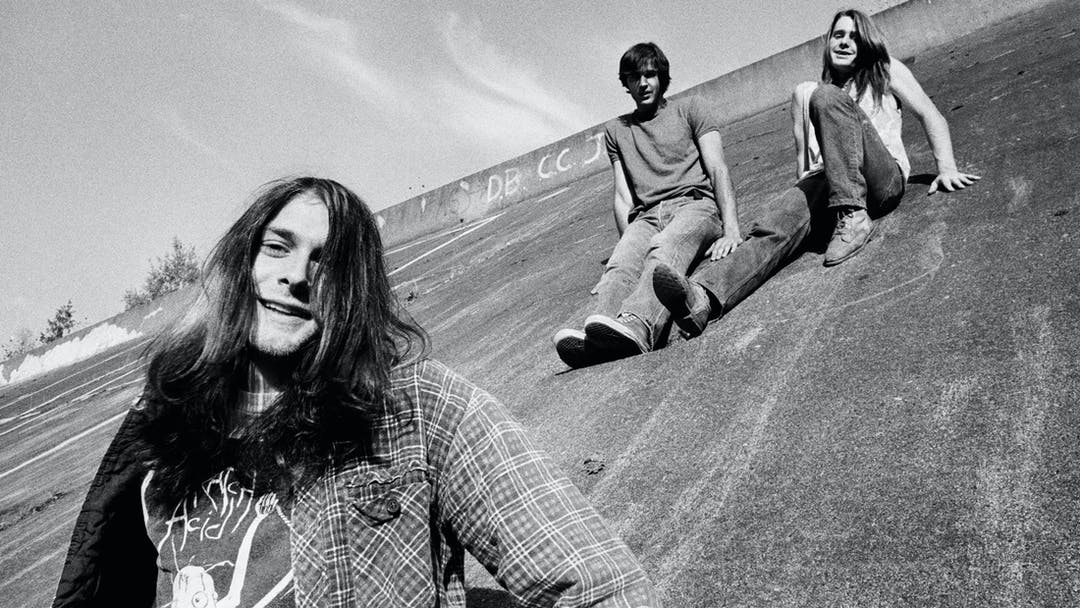
Anyway, the take-away from the ‘Crucified By Success?’ interview for me is that, far from seeing
Bleach as a freshman work they had progressed beyond, Nirvana wanted to recover something at the heart of the band’s identity that they had found recording to 8-track at Reciprocal. Kurt even states that he wants to use “exactly the same equipment”. Not long after that interview, in October 1992, Nirvana had indeed returned to Seattle and to Reciprocal Recording, and they recorded a bunch of predominantly instrumental demos with Jack Endino****. Then a short time after the new Reciprocal sessions, in February of ’93, they went to work with Steve Albini at Pachyderm Recording, a residential studio in Cannon Falls, MN. Pachyderm was set up in 1988, tracking to Studer tape machines through a 1978 Neve 8068 Mk. II console that came from Jimi Hendrix’s Greenwich Village Xanadu: Electric Lady Studios. In that ‘mission statement’ letter alluded to earlier, Albini says “Oh yeah, and it’s the same Neve console AC⚡︎DC’s
Back In Black album was recorded and mixed on.” I guess in itself that was a sort of progression from the Neve 8028 that
Nevermind went through at Sound City but Albini was only half right about this. The truth is that
Back In Black was tracked through an MCI 500 desk at Compass Point, the studio built by Island Records’ Chris Blackwell in Nassau, before overdubbing and mixing were done at Electric Lady through the 8068. Around 1976 Blackwell had kitted out Island’s Basing Street Studios in London with two MCI JH-500 series consoles as well. I assume the JH stood for Jeep Harned, that’s right we’re talking about Music Center Inc. again. The layout & signal flow of the MCI 500 would later inspire Sold State Logic’s 4000 design. When Trevor Horn took over and started ZTT in 1983, Basing St. became Sarm Studios and was fitted out with an SSL 4000*****. I’ll touch on Basing Street a little more in Episode 2 of this blog. But hey, even the legendary Criteria C console was replaced with an SSL in 1978.
Albums like
Hotel California were a big advert for MCI of course, recorded as it was at Criteria in Miami, FL, home to a thousand hit records. But really the console in Criteria Studio C was a custom build by Jeep Harned rather than a production line JH-500 you could buy ‘off the shelf’. The 500 series desks had a great sound and extended headroom, partly to allow for the advent of digital recording. For all that, after a few years they started to have extensive issues with cold solder joints. Being in-line desks each channel strip was a complicated set of circuits and the JH-500 modules had more than a thousand components. This problem was so pervasive that many studios simply replaced their consoles, rather than face reflowing so many joints. And this has affected their reputation in the vintage desk market. I’ve also read that a lot of MCI desks had poor power distribution & transformers. It was common for many of the production run 4, 5, and 6 hundred series consoles to need these upgrading, among other modifications, even from new. Nevertheless, let it be said that a customised MCI 500 that has been well maintained or restored will be a good sounding desk.
Grover ‘Jeep’ Harned’s introduction to the recording industry came around 1959 when he offered to completely rebuild the poor installation that had been Criteria’s initial construction as a modest one room studio the previous year. After a few nomadic years he’d settled in Florida, with a young family and gone into the growing home stereo trade. As a young man he’d been a US Army Electronics Instructor during the Korean War and then a seismograph prospector in the oil industry. He had more success with pro audio custom build commissions than sales commissions from the domestic variety. In 1965 Harned changed the name of his company, and his former Hi-Fi store Music Center Inc. become a pro audio custom manufacturer called MCI Inc. Aside from the technical input of Jeep Harned, Criteria benefitted from the expertise of another great name. Tom Dowd moved to Miami in 1967 and in 1970 began a relationship that gained Criteria the soubriquet Atlantic Studios South. It was the dawn of a golden era in record making: you only need look to the huge number of hit records that were made at Criteria. “Well, Jeep had altered or customized every bit of Mack Emerman’s equipment, and brought the Ampexes up to snuff. He didn’t have an MCI tape machine yet. He was still updating Ampexes. And the console was modified by Jeep, whatever the species of it was. Or it might have been the first version that MCI built. I know I did
Eat a Peach and 'Layla' on that MCI console.” (Tom Dowd, Interview with Blair Jackson in
Mix magazine, 11/1/99).
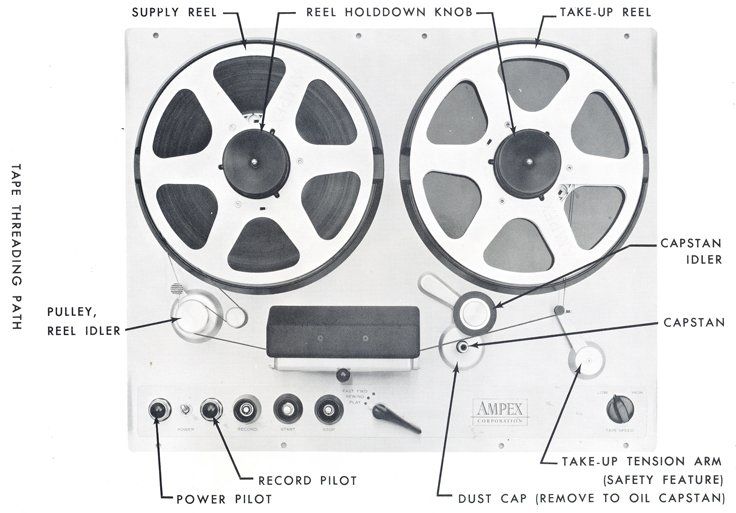
The Neve at Pachyderm may have been a deciding factor for Nirvana: Steve Albini had used a 32 channel 8068 Mk.I at Q Division studios in Boston in December 1987 for
Surfer Rosa. Long before hiring him to make
In Utero Kurt Cobain had already proclaimed in several interviews that Albini had produced his two favourite albums:
Surfer Rosa by Pixies and
Pod by The Breeders. Actually there may have been a more basic instinct involved in Cobain’s allegiances. Because the only other person involved in both those albums was Kim Deal. In Jim DeRogatis’ collected writings Courtney Love is quoted as saying of Kim Deal: “She’s very charming and sexy. She doesn’t change her clothes a lot, but she’s still sexy. She’s the only girl that Kurt ever admitted having a crush on.” (from ‘Courtney Unplugged’, in
Request, August 1995.
Milk It!, p.47; Da Capo, 2003.) Kurt frequently admired Kim in interviews, but it was always her talent he praised. In the Melody Maker for August 29 ’92 he was quoted as saying “The main reason I like [The Breeders] is for their songs, for the way they structure them, which is totally unique, very atmospheric. I wish Kim was allowed to write more songs for the Pixies, because ‘Gigantic’ is the best Pixies song, and Kim wrote it.” Pixies’ breakthrough hit from
Surfer Rosa featured Deal on lead vocals but was credited as a co-write with Black Francis - that’s not to say it wasn’t Kim’s song, she certainly wrote the lyrics. Of course Pixies’ quiet/loud/quiet/loud ‘atmospheric structure’ was a style that Kurt employed to great effect.
“Polly wants a cracker”
Kurt Cobain hadn’t been the only artist to remark Steve Albini’s work on Pixies’ debut album. Polly Harvey also cited both that record and again
Pod but also
Tweez, the Albini-produced 1987 debut album from Kentucky band Slint. The former Big Black and Rapeman frontman had recently formed his latest band Shellac when she sought him out to produce her 1993 sophomore album
Rid Of Me ******. In fact it was that recently finished PJ Harvey project, recorded in December ’92, that Albini sent to Nirvana as an example of what he could make Pachyderm Studios sound like, if they were to choose him to produce their third album. And let’s face it, if someone sent you
Rid Of Me as an example of anything at all, well you’d pay attention. I guess I’m biased though, I spent much of 2016-17 on the road with Polly and it was one of the best tours I’ve ever done.
Surfer Rosa stands up for itself in the pantheon of Indie albums, but
Pod probably isn’t anywhere near as well known as The Breeders’ second album.
Last Splash with it’s chart storming single 'Cannonball' (and the accompanying video that was Kim Gordon’s first shot as a promo director) helped them cross over into the mainstream.
Check it out though,
Pod is a great piece of work. That 1992
Melody Maker article about ‘Ten Records That Changed My Life’ marks one of the first occasions for Kurt speaking about
Pod and picking out ‘Doe’ (like a chicken in the bread pan?) as a particular favourite. I love ‘Doe’ and played it a lot on The Maccabees tour bus through June 2015 in the USA when we supported Mumford & Sons because our American Tour Manager’s name was Doe Phillips. But the standout track on
Pod for me is the cover of ‘Happiness Is A Warm Gun’. Deal’s initial scepticism at Ivo Watts-Russell's suggestion of a Beatles cover evaporated once she’d listened to it carefully. The amount of sexual innuendo in the song made it a perfect fit with the tracks she was already laying down. In the
Encyclopedia of Popular Music Larkin says of The Breeders’ version that it “achieves a friction that the original only hints at” (Colin Larkin, 2011). Given that The Beatles original was variously censored on both sides of the Atlantic and actually banned by the BBC, that’s really saying something.
Stitched together on 8-track tape from 3 disparate song ideas, that had been written across 2 different continents, over 7 separate months in 1968, the version of ‘Happiness…’ that appeared on The White Album was cobbled together from 2 different versions, jumping around between 6 different time signatures in 4 different keys. According to Mark Lewisohn’s book
The Complete Beatles Chronicle (p.300), on Tuesday 24 September 1968 takes 46 to 70 of the rhythm track were laid down and then the first section of take 53 and the second half of take 65’s one inch tape were cut & spliced together. I have read in several articles, that ‘Happiness…’ was variously cited by all four Beatles at one time or another as their favourite song on the White Album. The song was written as a kind of history of early Rock N’ Roll styles with all the credit going to John Lennon — though he took lyrical suggestions from several people. That he should later be gunned down so violently in a society awash with guns is an irony that has been commented on often. At http://www.beatlesebooks.com/warm-gun I found this quote attributed to Paul McCartney: “I was thinking the other day how poignant it was that John, who was shot in such tragic circumstances, should have written this song.” And then, printed at the top of p.226 in my huge copy of 2000’s
Anthology book I found that George Harrison once quipped: “If everyone who had a gun just shot themselves, there wouldn’t be a problem.” Maybe that’s what Kurt thought too. In one of his note books he wrote “Recycle, Vote, Question or Blow Your Head off. Sue me.” (Kurt Cobain Journals, Penguin, 2002). Whether his demise was suicide or not, it certainly left a legacy that was commercial. I read a statistic that more than a million other people have been killed by guns in the USA since John Lennon. Now in the summer of 2022 death by firearm is once more in the headlines, America’s incidence of mass shootings seems to have reached critical again.
“She’s not a girl who misses much…”
Drums are the foundation of Rock N’ Roll but they’re not always uppermost in people's thoughts. For Nirvana’s third album they would be at the front of everyone’s mind. In his 1993 book
Come As You Are: The Story of Nirvana Michael Azerrad wrote, “… Kurt was particularly after the drum sound he had heard on two Albini projects — the Pixies’ epochal 1988 album
Surfer Rosa and the Breeders’ excellent 1990 album
Pod. It’s a natural, powerful sound produced with canny microphone placement rather than phony sounding effects boxes. It reminds Kurt of Aerosmith’s 1976
Rocks album” (Azerrad, p.313)******. For the most part
In Utero would be recorded live with a little overdubbing -
much as
Rid Of Me and
Surfer Rosa had also been laid down. Albini spoke recently of Nirvana’s percussive purpose in an online interview with Daniel S: “Like, they wanted a big booming ambient drum sound, so I made use of the ambient sound of the room much in a very similar manner as I did with the Pixies.”

In an interview with Lewis Largent on
120 Minutes for MTV on June 20th 1993 (which I managed to find again on YouTube), Polly Harvey said this of working with Steve Albini: “He’s the only person I know that can record a drum kit and it sounds like you’re stood in front of a drum kit. It doesn’t sound like it’s gone through a recording process or that it’s coming out of speakers. It’s just, you can feel the sound that he records and um, that is why I wanted to work with him, 'cause all I ever wanted is for us to be recorded and to sound like we do when we’re playing together in a room”. She then went on to praise Albini’s skill in mic placement. Harvey wasn’t the only person praising Albini’s “canny microphone placement” as documented by Azerrad: it was one aspect of the
In Utero process that Cobain specifically raved about in several periodicals after the album was finally “Recorded by Steve Albini”. Albini in turn, meanwhile, raved about drummer placement. “
‘Probably the easiest guy to deal with of them all was Dave Grohl’, Albini says. ‘For one, he’s an excellent drummer, so there’s never any worry whether he’s going to be able to play. His playing was rock solid and probably the highlight of my appreciation of the band was watching Dave play the drums. He’s also a very pleasant, very goofy guy to be around.’ ” (Azerrad, p.316.) Coincidently, it was Albini who had played a pivotal role in placing a drummer with The Breeders.
The Breeders give birth to themselves, the legend says, when Kim Deal & Tanya Donelly decide to start a Disco outfit at a 1988 Sugercubes gig in a Boston club. After the Pixies’
Surfer Rosa tour that year, on which the support act was label- & stable-mates Throwing Muses, the respective seconds-in-command of those two bands decide they need to form another outfit if they’re going to get their own songs heard. The initial concept of the band is for a divergent Disco outfit. Lacking the funk (in Donelly’s recounting) to cover ‘Tell Me Something Good’ with any authority, they fall back on the genres they know and record a demo that’s “a little bit Country… a little bit Rock N’ Roll”. They record that demo with Boston violinist/vocalist Carrie Bradley (who would also guest on
Pod), a male bass player and three different male drummers. In order to convene an all girl line up — Deal’s concept for “The Bangles from Hell” — they go out and recruit a Brit, Josephine Wiggs as their bass player, and start auditioning drummers. Wiggs, a childhood cellist, supported Pixies in Europe as a member of The Perfect Disaster in 1988 — at which time she proves her worth to Deal in a variety of roles, including getaway driver. They finally settle on Shannon Doughton to sit behind the kit. She is Steve Albini’s recommendation and at just 19 years old brings a confidence that belies her age. She plays hard & fast and Steve Albini considers her drum sound a fundamental element in the band’s character. Coincidentally when I first started writing this article in May 2021 I was driving through a village called Doughton several times a week. Because of Covid 19, I was making ends meet by delivering plumbing supplies in and around the South-West of Britain, instead of gearing up for the festival season. Doughton intercedes between the main road and Prince Charles’ Highgrove House estate in Gloucestershire, almost like a disguise, or a front.
About A Girl
And just such a beard was Shannon Doughton. The Breeders had really recruited another Britt for their rhythm section: because Shannon Doughton was in reality a young man by the name of Britt Walford from Louisville, KY. Perhaps that’s why she was banished to another room in this clip from
Snub TV in February 1990. It’s only the real girls who get close to the camera. Britt played for local Punk outfit Squirrel Bait in the mid ‘80s, before going on to spearhead the Post-Rock vanguard in Slint. In early ’87 Slint supported Big Black in Louisville which led to Steve Albini producing their first album
Tweez after Walford and fellow former Squirrel Baiter Brian McMahon both moved to Chicago to attend Northwestern University. After hanging out with Albini while he was recording the Pixies, Britt “ended up living with Steve. Well, basically crashing on his couch for like 6 months.” Britt grew up playing in Louisville bands like Languid And Flaccid, and Maurice from the age of just 11 and by the age of 18 was an accomplished pianist. He went on to play bass, drums and guitar in Palace Brothers with Will Oldham and it was Bonnie Prince Billie in fact who took the now iconic B&W cover photo for Slint’s groundbreaking second album
Spiderland. (This time Oldham was behind the camera, having appeared as the mystery crash helmeted driver of the Saab 900 in the cover photo for
Tweez.) Unfortunately once that finely crafted second album was finished, so was the band and they split. It’s influence however was far from finished, not by a long chalk. It’s one of those records that truly deserves the epithet “seminal”.
Slint’s second album was not produced by Steve Albini, but in a prescient review in
Melody Maker when
Spiderland was released, he predicted “In 10 years it will be a landmark and you’ll have to scramble to buy a copy then. Beat the rush.” Albini was under-selling it. The cinematic breadth of
Spiderland and the calm assurance of it's delivery would make it a touchstone album for the entire Post-Rock genre. When a reconstituted Slint toured their influential 1991 album around European festivals in 2014 I went with them as backline tech. I got on well with Britt and we had some great conversations that we followed up via email at the end of that run. I asked Britt about his time as a female drummer and his first exciting trip to the UK at the age of 19. He told me that initially the new “all female” foursome practiced and wrote at Fairfield House, Josephine Wiggs’ parents’ home in Biggleswade, about 50 miles north of London. It was from this dilapidated, 14 bedroom, Grade II listed, pile of bricks that Josephine’s environmental activist father finally brought down Concorde. Britt told me they then got stuck into proper rehearsals in Camden Town before heading to Palladium, a residential studio in Edinburgh, to record
Pod
with Steve Albini in January of 1990. That’s Britt you hear at the end of ‘Happiness Is A Warm Gun’ asking “Josephine, do you think you’re going bald?”
Breadcrumb Trail
Britt Walford would go on to many other bands and projects (as would Brian McMahon & guitarist David Pajo) and he would return to collaborate with Kim Deal on numerous occasions. Watch him serving alongside Kim & Kelley Deal in the marvellous video to 2014’s ‘Biker Gone’. But the only other record that Britt made with The Breeders per se was the 1992 four song EP
Safari on which he used the
nom de guerre Mike Hunt. Assuming it was a joke about his lack of a vagina, I mentioned it to him in an email and he found it “hilarious” that I genuinely went to school with a guy called Mike Hunt. The next time Slint toured Europe I couldn’t do it: mostly I was on the road with Suede again, but I told them I’d catch up with them somewhere, since half the Suede team wanted guest-lists for Slint’s London gig. I’d spotted a poster for upcoming Slint shows, round the corner from the rehearsal studio where I was working with Chrissie Hynde and sent them all a phone picture of it to get the guest-list ball rolling********. In another coincidence, when I was conceiving this blog,
Rolling Stone magazine published this in depth interview about the legacy of
Spiderland which is both fascinating and informative:
rollingstone.com. I don’t know that Kurt Cobain ever listened to
Spiderland, but the first two minutes of
In Utero’s run-out song ‘Gallons Of Rubbing Alcohol Flow Through The Strip’ certainly sounds very Slint; though by the end Cobain’s delivery of the line “City of Stars” reminds me of Steven Jesse Bernstein’s Sub Pop recording of ’No No Man’.
There is still a recording studio in the narrow, triangular wooden building at the junction of Leary Way and 6th Avenue on the edge of Seattle’s Fremont neighbourhood, though it is no longer known as Reciprocal Recording. These days it’s called the Hall of Justice and it still has tape machines, including 8-tracks, but no Otari. Their main recorder these days is a Studer A80 24-track machine, but they say on their website that they also installed a Tascam 48 and a Tascam 80-8 “by request”. I’ll talk about the Tascm 80-8 in part two of this Super 8 blog. Both these TEAC Tascams are half-inch 8-track tape machines like the MX-5050 that once worked there before it was enshrined in the Experience Music Project/MoPOP museum. Presumably they get a lot of enquiries from people who want to record the way Nirvana did back in the day. And, if Kurt could go and make one last Nirvana album now, I think he’d want to do it at Reciprocal with Jack Endino. Though he wouldn’t be able, in his own words, to “rent exactly the same equipment as was there when we recorded
Bleach”.
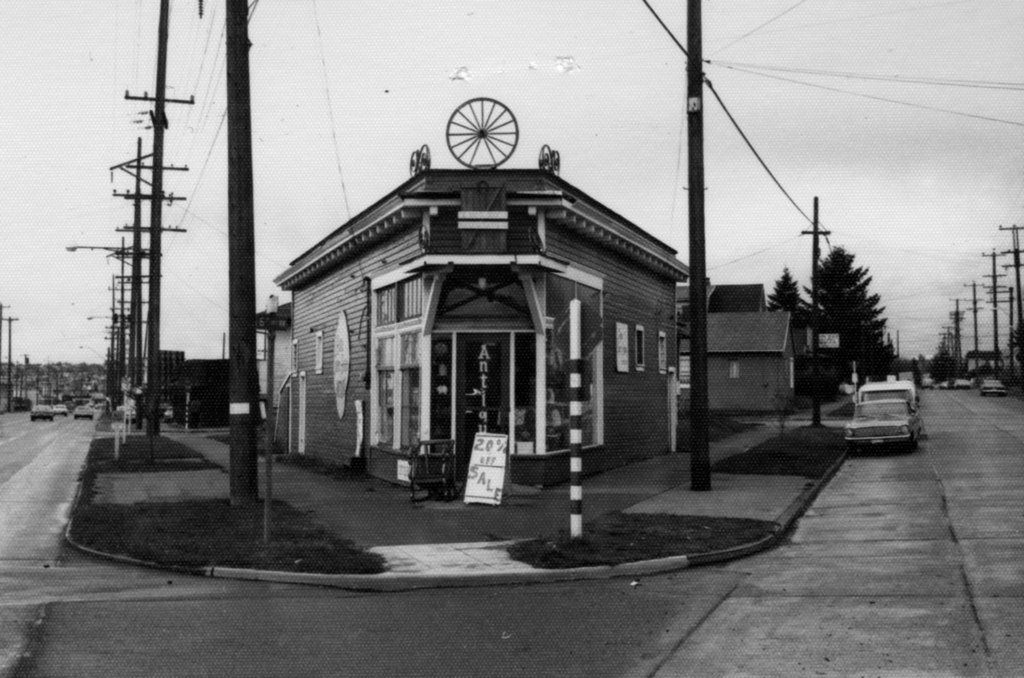
The history of Jack Endino recording
Bleach on 8-track at Reciprocal is obviously still an inspiration for young bands recording today — and not just because of Nirvana. Mudhoney's
Superfuzz Bigmuff and all their early singles — as well as Soundgarden’s
Screaming Life,
God’s Balls by TAD,
Dry As A Bone by Green River, Screaming Trees’
Buzz Factory, Mark Lanegan’s first two solo albums, L7, Hot Hot Heat,
et al were recorded there too. I’m not sure it was done at Reciprocal Recording but Endino also recorded and produced Afghan Whigs’
Up In It. Otari weren’t making an idle boast in their 1981 MX-5050B advert when they suggested “… the time you spend to acquaint yourself with the “B” just might mean the difference between spending your money on a machine that will do for now — or deciding to make the investment in a basic creative tool that will pay you back handsomely in the years to come.” It certainly paid back Jack Endino handsomely — in terms of his legacy as a recording engineer at least. If you’re looking to get a great sounding record why not spend some time at New Cut Studios and "acquaint yourself with the" Bleach machine. Here's a great in-depth interview with Jack Endino, Kim Thayil & Krist Novoselic that Rick Beato just posted about
Reciprocal Recording and the Seattle scene.
I believe that Kurt Cobain always wanted to get back to the pure artistic statement Nirvana made with
Bleach - the raw power they captured on the Otari MX 8-track machine. In another coincidence, the MX-5050 we have at New Cut Studios started out life as a 2-track, but was converted to 8-track with advice & parts from one of Steve Albini’s technicians at Electrical Audio Studios in Chicago, IL. And then when we were installing our Neotek Essence recording console a few years ago, we ended up buying 5 male EDAC connectors from Electrical Audio, to terminate the multi’s coming in & out of the desk to the patchbays. Having bought them online we didn’t realise the EDACs had come from Albini until we were looking at the receipt. Of course Steve Albini put customised Neotek desks in both of his main control rooms at Electrical Audio Studios. In terms of analogue recording, both the Otari MX and Neotek Essence here at New Cut are almost the last machines of their type, the analogue apex of the technological parabola — before digital audio and computer based recording eventually advanced enough in quality to take over from analogue pathways to tape as the industry standard. But people just don’t seem to want to let go of tape — even when using DAWs. And if you come to New Cut to record you don’t have to choose: our vintage gear is plumbed into the same network as Pro Tools Ultimate. You may have noticed our slogan here & there — “An analogue mind in a digital world”. We’re not championing our antiquated attitudes in the face of progress, we’re advertising our traditional skillset as applied to the cutting edge. But since we started this story with him, let’s sign off with another observation from ‘the Wizard of Waukesha’:
“What these software guys don't get is that we ourselves are bundles of electrical energy,” Les said. “What happens in a studio is an exchange of energy between musicians and singers. Tape is seamless. It captures the humanity of what's taking place without changing it. Tape is a true historically-accurate record of those moments in time that would never happen the same way again.” - 'An Evening With Les Paul at His Legendary House of Sound' by John Hanti, with Steven Acker.
* It wasn’t only Operation Paperclip & NASA that benefitted from the plundering of Nazi technology by the joint US/UK T-Forces. Thanks to Captain Jack Mullin and Bing Crosby, tape recording became the biggest commercial advance in how humans made music in centuries. Yeah Bing Crosby, I’m serious, look it up. It was also Bing Crosby who gave Les Paul his first Ampex 200A reel-to-reel in 1945. In fact the post war recording boom sadly owes an awful lot to German fascism. Hitler’s populist mesmerism was a cult of personality that also pushed the technology of microphone construction to a whole new standard. Lester Bangs felt the Nazi’s biggest contribution to the 20th century was methamphetamine: “… the Reich never died, it just reincarnated in American archetypes…
” (‘Kraftwerkfeature’,
Creem, September 1975. Compiled in
Psychotic Reactions And Carburetor Dung, p.155; Heinemann, 1988).
** On August the 16th 1962 David Sarser’s violin was stolen from his New York studio and he never played professionally again. He said later “I have no desire to play any other instrument. It became part of me, and I became part of it” ('Lost and found: stolen instruments.' Carla Shapreau, September 8, 2015). Sarser’s reaction might seem extreme, but the instrument he’d lost was known as the Lamoureux-Zimbalist, made in Cremona in 1735 by Antonio Stradivari, just two years before the master died at the age of 93. The violin was so named for two of it’s previous owners. It had been one of three Stradivari instruments owned by the C19th French violinist & conductor Charles Lamoureux. Immediiately prior to Sarser’s custody the violin was owned by Efrem Zimbalist who also owned three Stradivari, as well as a Guarneri and a Guadagnini. David Sarser played his Strad under the baton of Arturo Toscanini throughout the 1950s with the NBC Symphony Orchestra, until one day it just disappeared. In 2015 the FBI re-opened the case; well we are talking about a Cremona violin here, an instrument worth millions. There was a very thorough article in the Wall Street Journal recounting the convoluted case of how the instrument was taken to Japan, it’s disputed ownership, and how it ended up advertised on the dark web by a Norwegian drug dealer in 2018. There’s a movie script in there somewhere.
*** TTG took their name from an Israeli guerrilla unit derived from both the Jewish Brigade and the Haganah in the post war chaos of the late ‘40s. The acronym stood for
Tilhas Tizi Gesheften — a portmanteau phrase of arabic and yiddish words that roughly mean Kiss My Ass Enterprises (though there’s also the German sense of geschäft as a euphemism for defecation, as in doing one’s business. Tom Hidley’s partner in the studio, Ami Hadani was an experienced engineer, but he was also supposedly an IDF reservist who would disappear for long periods when the Arab-Israeli conflicts of the ‘60s & ‘70s broke into open warfare. Hidley & Hadani met at A&R Studios in NYC in the ‘50s and Hidley went on to design & build all the Californian Record Plant rooms.
**** This wasn’t their first return visit. Nirvana had already gone back to Reciprocal in July 1990 to record the superb single ‘Sliver’ - using TAD’s gear during a break in recording (I still remember the first time that tune dropped down the Student Union Indie night at Keele University, and the sheer joy of leaping around the room to it - probably sandwiched between ‘Son Of Mustang Ford’ and ‘Freak Scene’).
***** Electric Lady actually retro-fitted a completely re-capped Neve 8078 in 2011; it’s old 8068 is no longer at Pachyderm Recording, but now resides in Studio A of the Power Station New England in Waterford, CT. According to Vintage King Audio who refurbished both of these Neve consoles, the
In Utero 8068 was also installed at different times in both The Record Plant and Organica Recording. We don’t have any gear at New Cut actually built by Rupert Neve, but we do have a Nekotronics SSL 4000 bus compressor clone.
****** The only time I saw Albini play with Shellac was at an All Tomorrow’s Parties weekend in Minehead, coincidentally curated by The Breeders. I was working stage crew for the 2009 festival, looking after the rental backline from Snowball's. I particularly enjoyed Kelley Deal’s knitting workshop in the Crazy Horse Saloon that year.
******* Indeed we can see evidence of this in Kurt’s own hand, in his notebooks as published in
Kurt Cobain Journals (Penguin, 2002). On page 271 under the heading ‘Top 50 by Nirvana’, the first 3 albums Kurt lists are
Raw Power Stooges,
Surfer Rosa Pixies and
Pod Breeders. There are no numbers or rankings in this list, but that order still seems significant in terms of what was uppermost his mind. Incidentally Aerosmith’s
Rocks comes in 23rd near the top of the second column, but coming in 16th further down the first column is PJ Harvey’s debut album
Dry.
********The remarkable David Pajo, a guy I got to know a little on that
Spiderland tour was also in London as a young man in 1991. He told me how thoroughly delighted he was to see the poster photo I sent and how it took him right back to graffito-ing the toilet of a Taco Bell in London with the phrase "slint is a band from louisville kentucky." I had an instance of revelation and in an almost visible flash of light I remember reading it in that same toilet. He said he thought it was the only Taco Bell in the UK and I told him it was in Piccadilly Circus and that I used to go there a lot at that time for crispy tacos and to load up on sachets of hot sauce. The convolutions of coincidence I untangled researching this piece made me spend far too long looking for other connections and it ended up as a 4-part series. I know that sounds daunting but if you enjoyed this piece, I promise there’s better stuff to come.
©️Mark Vickers May 2022
